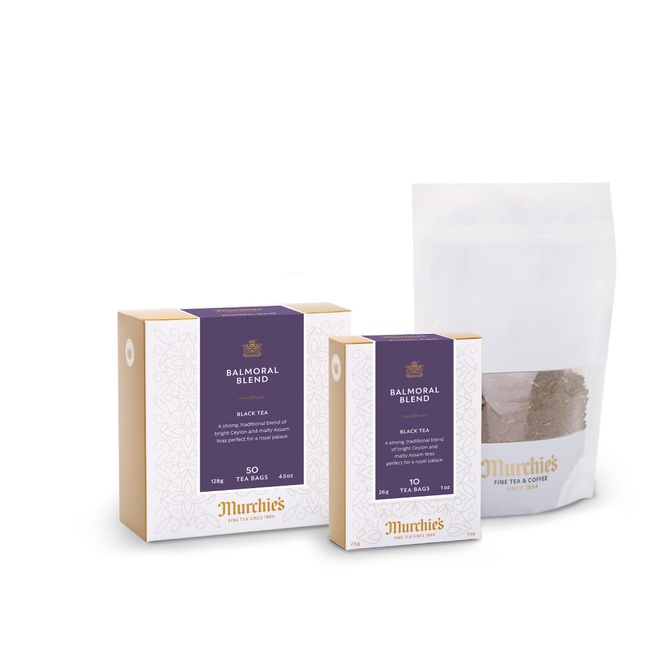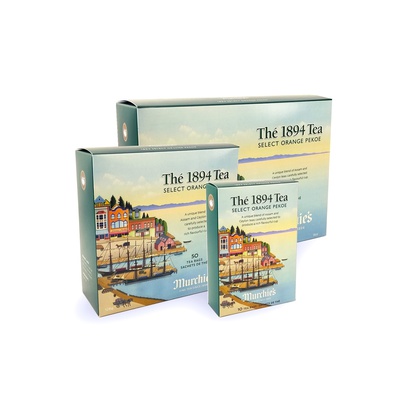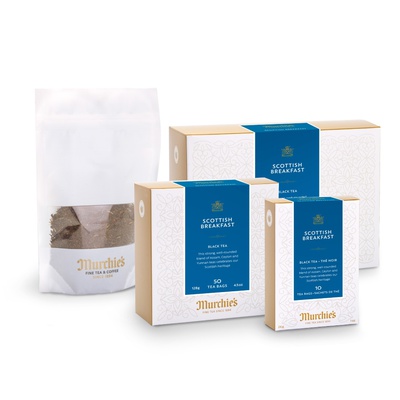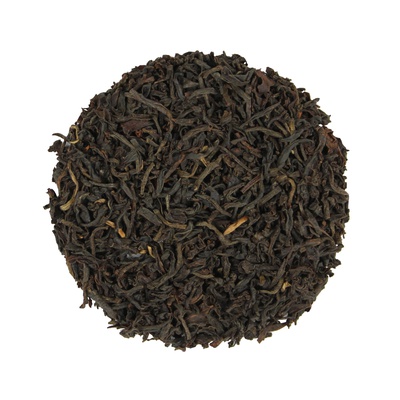Murchie's Balmoral Blend Tea was originally blended for York House School – a private school for girls which has been an institution in Vancouver for over 75 years
This blend is also a nod to Murchie's Scottish roots, as Balmoral Castle is the Queen’s official residence (palace) in Scotland, where John Murchie would deliver teas to Queen Victoria, before he came to Canada and founded Murchie’s in 1894.
Recommended for traditional tea lovers, fans of Irish Breakfast, English Breakfast, Scottish Breakfast and Assam Pure looking for a different mix of teas or tea drinkers looking for a strong black blend with some briskness but not as much as pure Ceylon.
Ingredients: Black tea
| Caffeine | Caffeinated |
|---|---|
| Cup Strength | Very Strong |
| Origin | Blend |
| Tea Format | Tea Bags |
| Type | Black |
Smooth Review by ['JN']
I just received the tea as a gift and love it. It’s a very smooth tea with no bitter aftertaste.
Posted on 2022-07-09teabags Review by ['debbie']
Love this tea. Could this be sold in 100 or 250 bag sizes please.....
Posted on 2021-09-27Strong but Smooth... Review by Urbanhoundmom
My go to tea for the morning. Strong, good body not a hint of bitterness. Great finish, pleasant rich flavor. Highly recommend....
Posted on 2017-05-23Write your Own Review
You're reviewing: Balmoral Blend Tea Bags
Flavour Profile Guide
Tea and coffee tasting is a very individual, multi-dimensional experience: one person’s perfect cup can be too strong or weak, too brisk or watery for the next person. At Murchie’s, we believe that the best tea or coffee is the one that YOU like the best! We use the following flavour profile guides to help compare our teas and coffees within a relative scale.
Tea Strength Ratings
This rating method indicates the strength of flavour each tea has when brewed according to our brewing guide.
RATING |
RATING PROFILE |
|

|
Light/Delicate: Very light in colour and delicate in flavour | |

|
Medium: Medium-light cup with slightly fuller cup | |

|
Medium-Strong: Medium-dark cup, medium body, and full flavour without harshness | |

|
Strong: Full body, rich cup, takes milk well | |

|
Very Strong: Rich, dark cup with very full, strong flavour and briskness |
Coffee Ratings
We rate the flavour properties of our coffees along two dimensions: roast and body.
Roast is simply a result of how long and how hot the beans have been roasted, which can be seen in the colour of the finished bean, and typically results in general flavour traits:
| Light Roast | More acidity, brightness and a slight pucker | |
| Medium Roast | Slightly richer flavours, some acidity, enhanced creaminess | |
| Dark Roast | Distinctive roasted flavour, sometimes notes of toasted sugar or charcoal |
Body is the term used to describe how the brewed coffee feels in your mouth:
| Light Body | Easy to drink with little lingering flavour, ‘thin’ or ‘clean’ feeling on the palate | |
| Medium Body | Heavier, creamier mouth-feel with more lingering flavour | |
| Full Body | Rich, full-mouth feeling: hits all of the palate and lingers |
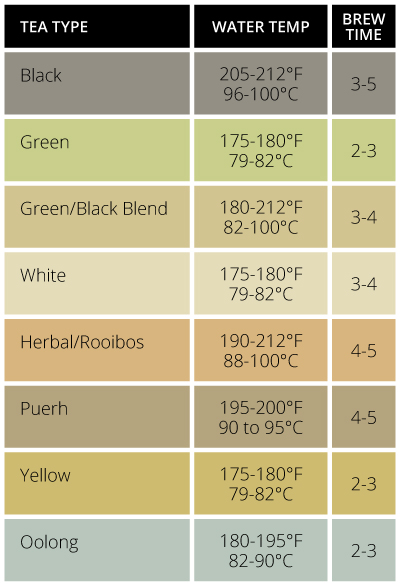
Tea Brewing Guide
Different types of teas should be brewed according to certain times and water temperatures to bring out their best flavours. Use this guide as a starting point, and then experiment until you find the perfect brewing method for your favourite tea.
Based on approximately one level teaspoon (2.5g) of loose tea or one tea bag per 6-8 ounce (180-240ml) cup. For stronger flavour, add more tea. Brewing for longer may increase the strength of the tea, but will likely also cause bitterness.
Brew times shown in minutes.
Coffee Brewing Guide
The simplest methods for brewing coffee are drip coffee, pour over and French press. These guidelines are a starting point; modify the ratio of coffee to water, the grind, and brewing time to your taste. If your coffee is not strong enough, increase the proportion of coffee per cup of water, grind the beans finer, or allow them to brew longer – or any combination of these factors. If your coffee is too strong, simply do the opposite.
Drip coffee or pour over method: hot water is gradually poured over coffee grounds and slowly drips through
- Fine to medium grind coffee
- 1.5 to 2.5 tablespoons of coffee per cup of water
- Coarse grind coffee
- 1 to 1.5 tablespoons of coffee per cup (e.g. 4-6 tbsp for a 4-cup French press)
- Pour about 1/3 of the water over the coffee grinds; wait about 30 seconds and then pour in the rest
- Wait 4-5 minutes, then push down the plunger to separate the grounds from finished coffee, and enjoy!

